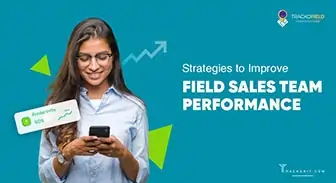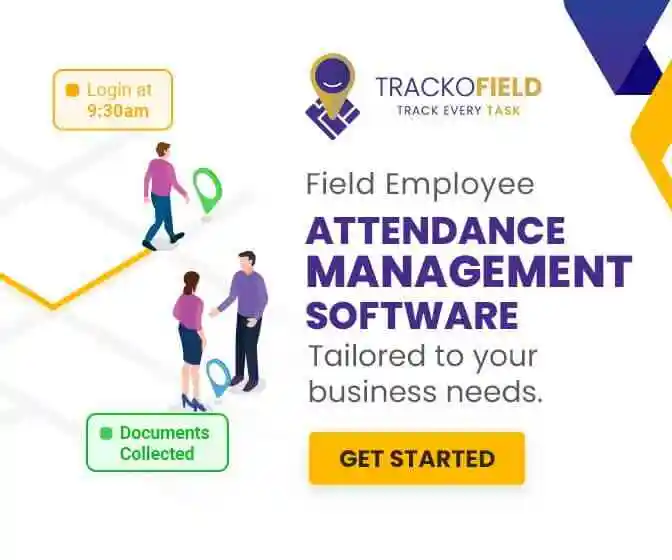-
TrackoBit
Manage commercial vehicles with the new-age Fleet Management Software
TrackoBit -
TrackoField
Streamline your scattered workforce with Field Force Management Software
TrackoField -
Features Resources
-
Blog
Carefully curated articles to update you on industrial trends. -
White Paper
Insightful papers and analysis on essential subject matters. -
Glossary
Explore an alphabetical list of relevant industry terms. -
What’s New
Get TrackoBit & TrackoField monthly updates here. -
Case Study
Explore the cases we solved with our diverse solutions. -
Infographics
Explore key topics through visually impactful infographics.
-
About Us
Get to know TrackoBit: our team, ethos, values, and vision. -
Careers
Join the most dynamic cult of coders, creatives and changemakers. -
Tech Support
Learn about our technical support team and services in detail. -
Events
Check out the exhibitions where we left our marks and conquered. -
Contact Us
Connect with us and let us know how we can be of service.
Biggest EV Charging Challenges Fleet Managers Face
- Author:Ayushi Nagalia
- Read Time:6 min
- Published:
- Last Update: November 5, 2024
Table of Contents
Toggle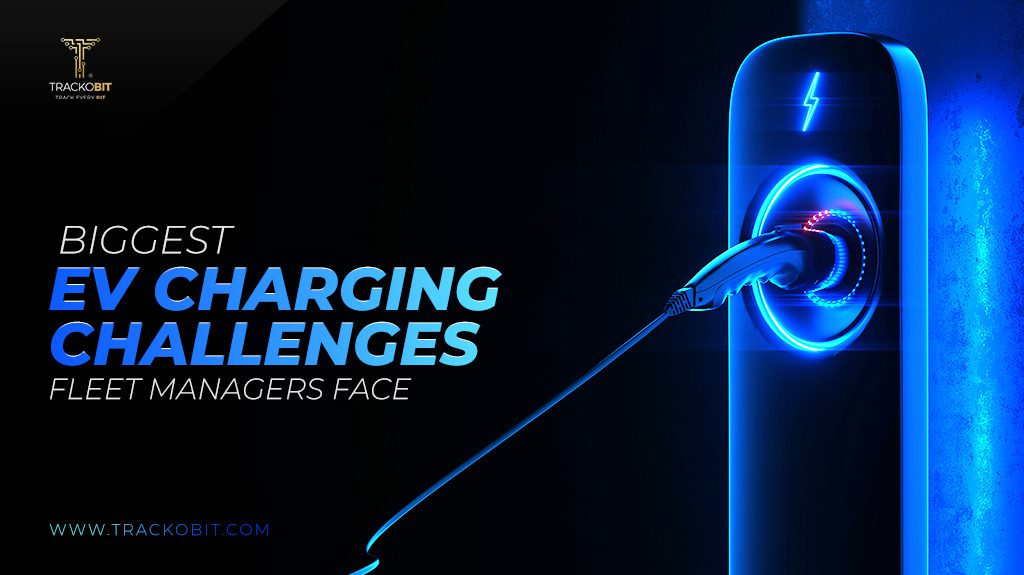
Weak infrastructure and low charging speeds pose EV charging challenges for fleet managers. But nothing that cannot be solved with fleet management software!
Table of Contents
Toggle
We live in revolutionary times when technology is changing every aspect of our lives. And technological changes such as EV adaptation into commercial fleets are nothing but positive. But do you know who it is not comfortable for? Fleet managers who are struggling to navigate the management challenges in this growing segment.
No worries, though!
Even though the EV segment has been here for a while, it is still in its nascent stages. And the challenges will soon be overcome organically. But until then, let us look into the top challenges of fleet managers dealing with EVs. We will also look into some possible solutions, so read along!
How Is The Role of Fleet Managers Changing With a Shift Towards Electric Vehicle Fleet Management?
The basics of what fleet managers do will always stay the same – they will always need to manage a commercial fleet. They need to overlook the safety, productivity, efficiency, and maintenance of vehicles and their subsequent operations.
Even most functions to overlook such as dispatch management and operational supervision are the same.
However, that is not to say that everything in their role is the same.
With commercial fleets still in the process of adapting the EVs, it comes to fleet managers to plan the change in transmission. They need to navigate through the challenges that come with changing a major segment of the fleet.
The biggest change in a fleet manager’s role comes in the form of managing driving ranges. Even though most commercial EVs have good driving ranges, the availability of charging stations is not as easy as fuel stations. So, fleet managers’ concern is not only determining routes that cost the least but also that have charging stations along the way.
Now, instead of just looking into the fuel consumption patterns, fleet managers also have to look into changing and energy consumption patterns. Not just fuel conservation practices, but fleet managers now have to come up with smart charging strategies.
The onus of educating drivers also falls onto the fleet managers. While they had to do this before as well, things were slightly different. This is so because drivers are already aware of ICE transmission vehicles and how to drive them efficiently. All managers had to do was just see where the drivers needed to improve and train accordingly. However, with EVs, fleet managers have to explain the entire concept to drivers, and all the best charging techniques along with regulations.
The Biggest EV Charging Challenges Fleet Managers Face
Yes, EVs have been around since the 1890s. However, it is only in the late 2000s that we have been seeing highway-capable EVs. And the EVs in commercial fleets have been a pretty recent occurrence too. Over that, since the tech is still developing, most businesses had been hesitant in adapting EVs for their commercial fleets.
However, fleet managers who do overlook EVs know that charging and charging challenges are the biggest in the electric fleet. Let us look into some of the EV charging challenges for fleet managers here:
Inadequate Charging Infrastructure
The charging infrastructure is not at par with the refuelling infrastructure. There are not enough EV charging stations in total, and good luck finding them in rural areas! Since EV adaptation has become the new trend, there are way too many vehicles on the road for the number of charging stations.
However, even when fleet managers manage to find stations on the way, getting vehicles charges still comes with these challenges:
- Charging equipment mismatching
- Not getting a charging spot in peak hours
- Getting lower run time than required till the next station
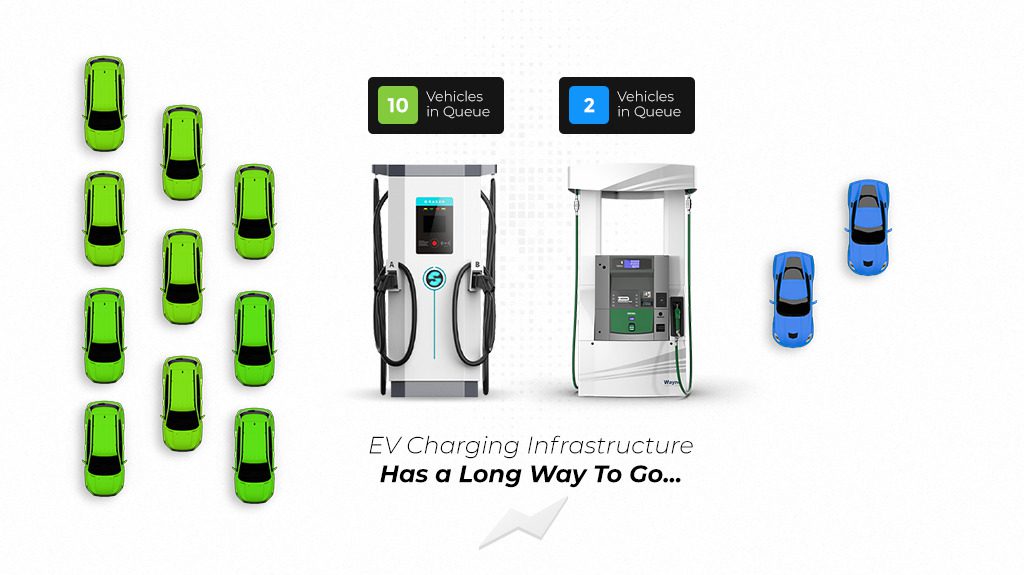
Time Constraints and Charging Time
Picking up from where we left at the previous point, time is a huge issue in EV fleet management. Even with technological development, EVs take a considerably longer time to charge than field vehicles take to be refilled.
What’s worse is that they even run for shorter durations!
So, here are some huge issues that come up:
- Vehicles stay at stations for long durations just to get a spot.
- Even with a spot, vehicles stay back for long times to get to 100%
- They have to go through this time-consuming process multiple times!
Time management becomes a whole new problem for fleet managers to handle. And they have to alter routes, deadlines, and several other things according to the extra charging time that EVs will take.
Different Regulations
Of course, EVs also have a certain set of regulations for charging and consumption.
But understanding, managing, and making drivers understand all these regulations is not child’s play. And newer fleet managers cannot afford that many tickets, right? Not complying with these regulations might lead to tickets, or ruin the entire shop!
How to Solve The Electric Vehicles Charging Challenges?
Of course, nobody wants to work with inefficient vehicles. And trust us, EVs are not actually inefficient. The new tech just comes with new challenges that fleet managers have to find ways to navigate through. Let us look at some of the solutions to those EV charging challenges!
Plan Charging Schedules
The one thing that managers really have to get used to in electric vehicle fleet management is the planning bit of it. Yes, fleet management software is anyway meant to help plan a lot of things such as routes. But, with EV fleets, the planning becomes extensive.
Managers need to calculate and guess how much distance an EV will run for, find a rare charging station en route, and plan future tasks accordingly.
However, all this doesn’t have to be done manually. Fleet managers can be rid of so many hassles and calculations with EV fleet management software. This software can:
- Set waypoints to charging stations along the way
- Give dynamic ETAs to fleet managers and customers
- Collect and analyse data on each charge cycle for future
Maintaining Good Driver Practices
Just as with fuel management, driving practices make the world of a difference in how much energy is being consumed in an EV. Since EVs already have a lower driving time, it is crucial for fleet managers to track and analyse the energy consumption patterns of each vehicle and their corresponding drivers.
It is necessary to educate and train drivers in terms of better energy consumption practices. This way, managers can reduce the number of trips to the charging station.
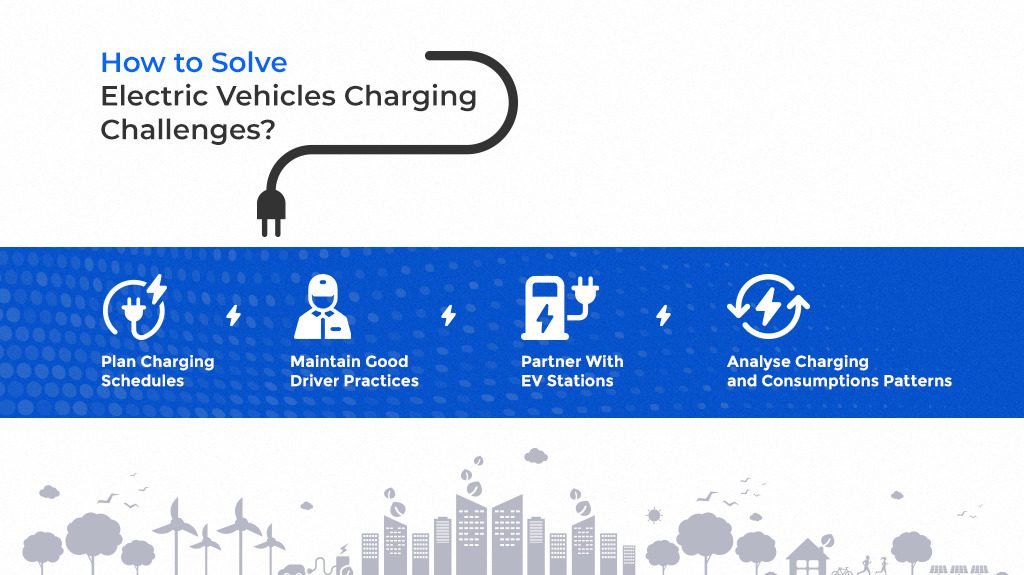
Partnering With EV Stations
This is the best way fleet managers can ensure that they always get a spot in stations and always find stations on their way. Partnering with EV stations can ensure:
- Vehicles always get reserved sports in the station
- There are enough stations on the concerned routes
- The fleet too gets advertised through the EV stations
Analysing Charging and Consumptions Patterns
Using fleet management software to constantly track and analyse the EV changing hand energy consumption patterns is crucial. Once the fleet is integrated, the software will do all the collecting for you while you sit back and use the data to strategize instead.
The software will give managers bite-sized information. Therefore, it becomes simpler for managers to understand the good and the bad areas. And no understanding means no improvement, right?
Say No to Challenges of Fleet Managers with TrackoBit!
By now you are aware that EV is the future of (light) commercial vehicles. So, what are you waiting for? Now is the time to mitigate all the challenges that fleet managers face in terms of electric vehicle fleet management and the answer is EV fleet management software!
Get your demo for TrackoBit now!
Ayushi Nagalia is a Senior Content Specialist at TrackoBit. She is a marketing maverick with a lush background in literature. With years of experience crafting content for various niches, she speciali... Read More
Related Blogs
-
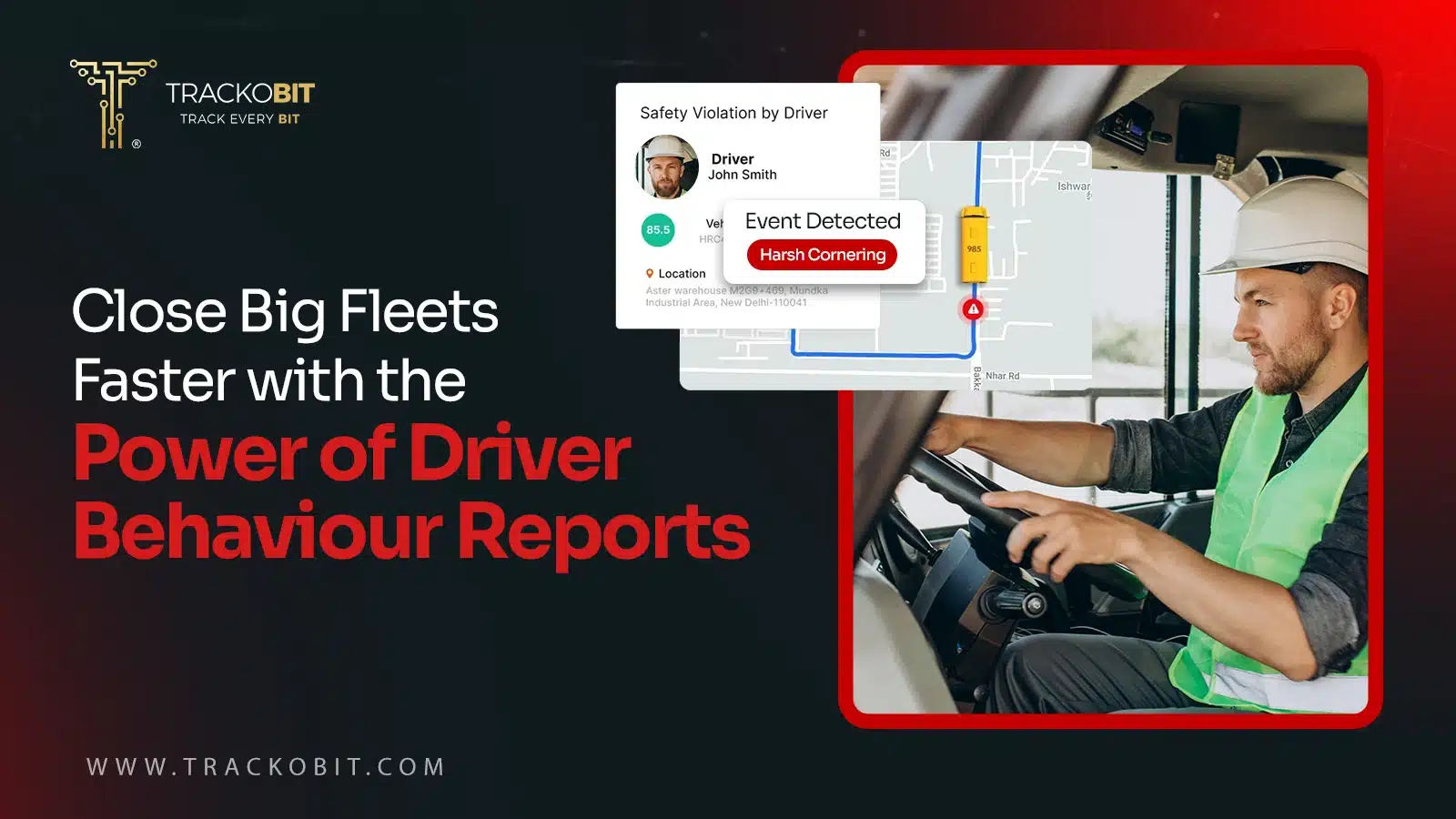
How to Use Driver Behavior Reports as a Sales Hook to Close Big Fleets
Tithi Agarwal October 16, 2025TrackoBit’s driver behavior reports empower fleet providers to win big contracts by showcasing safety, efficiency, and measurable ROI.
-
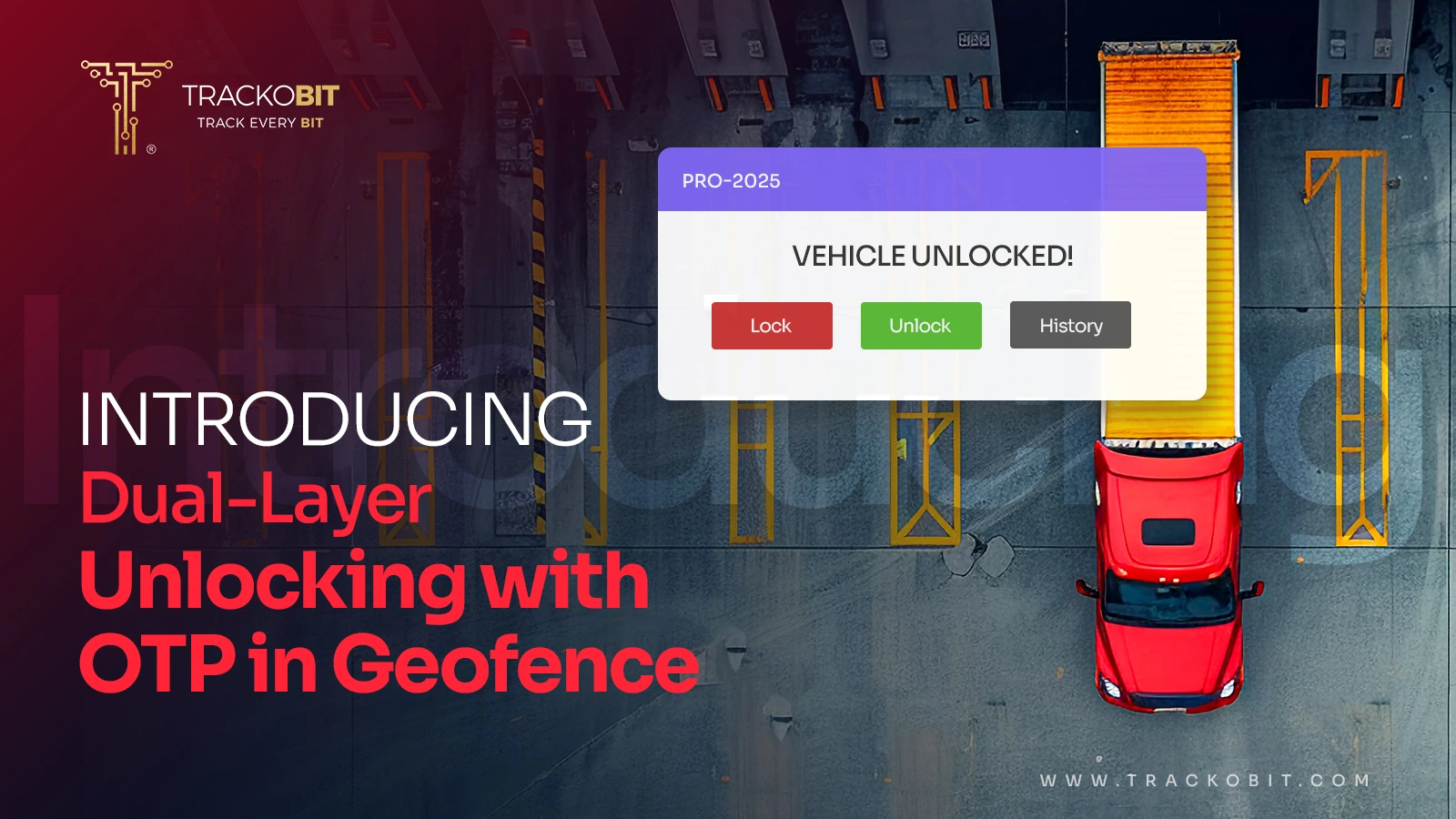
TrackoBit’s Unlocking in Geofence with OTP: Elevating Cargo Protection
Tithi Agarwal September 16, 2025TrackoBit’s latest feature – Unlocking in Geofence with OTP lets you lock out theft and unlock cargo only at the…
-
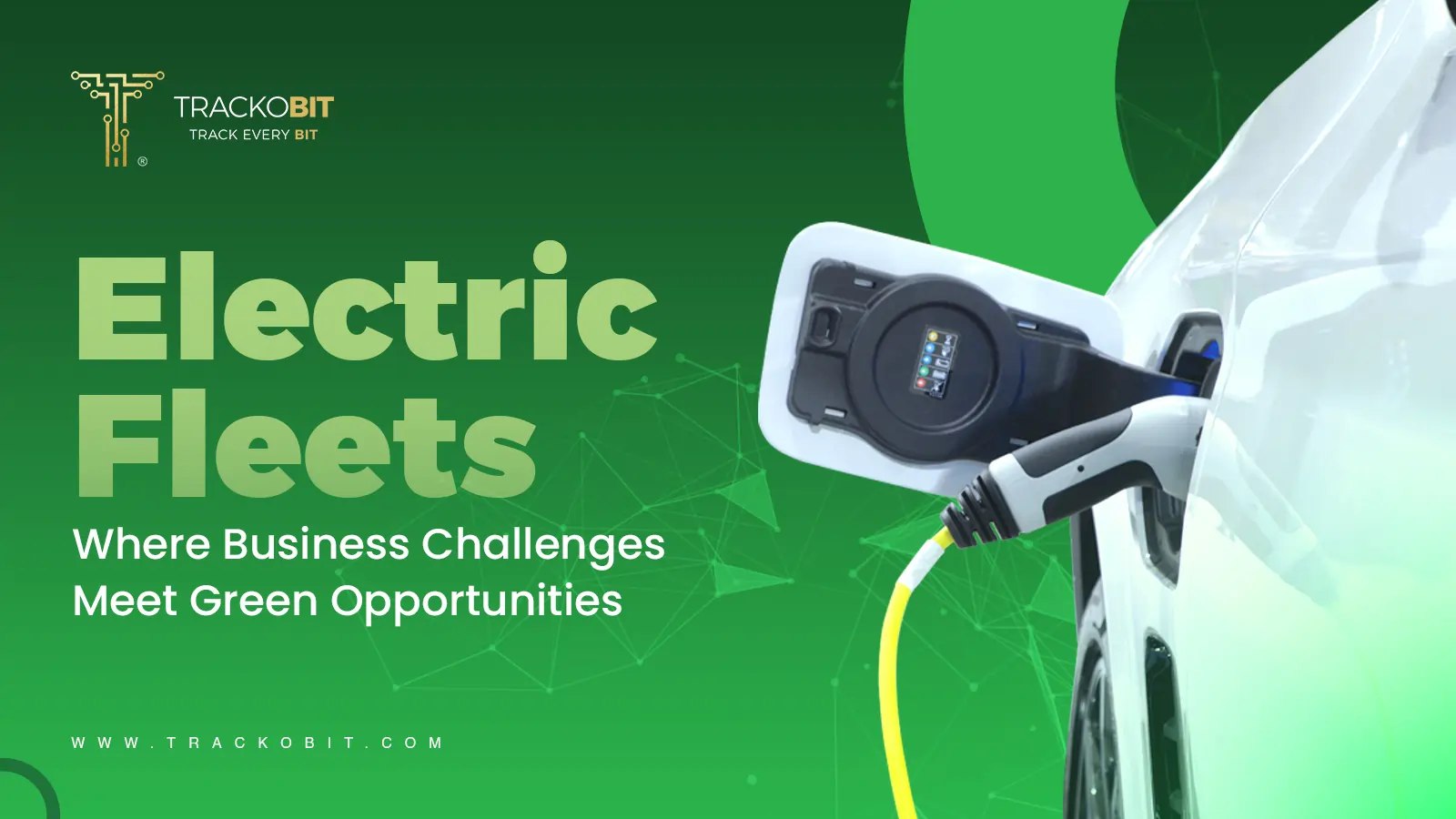
The Rise of Electric Fleets: Challenges and Opportunities for Businesses
Tithi Agarwal September 4, 2025The global fleet landscape is poised for a decade-long transformation. This change is being powered by electricity. Logistics-led businesses are…
-
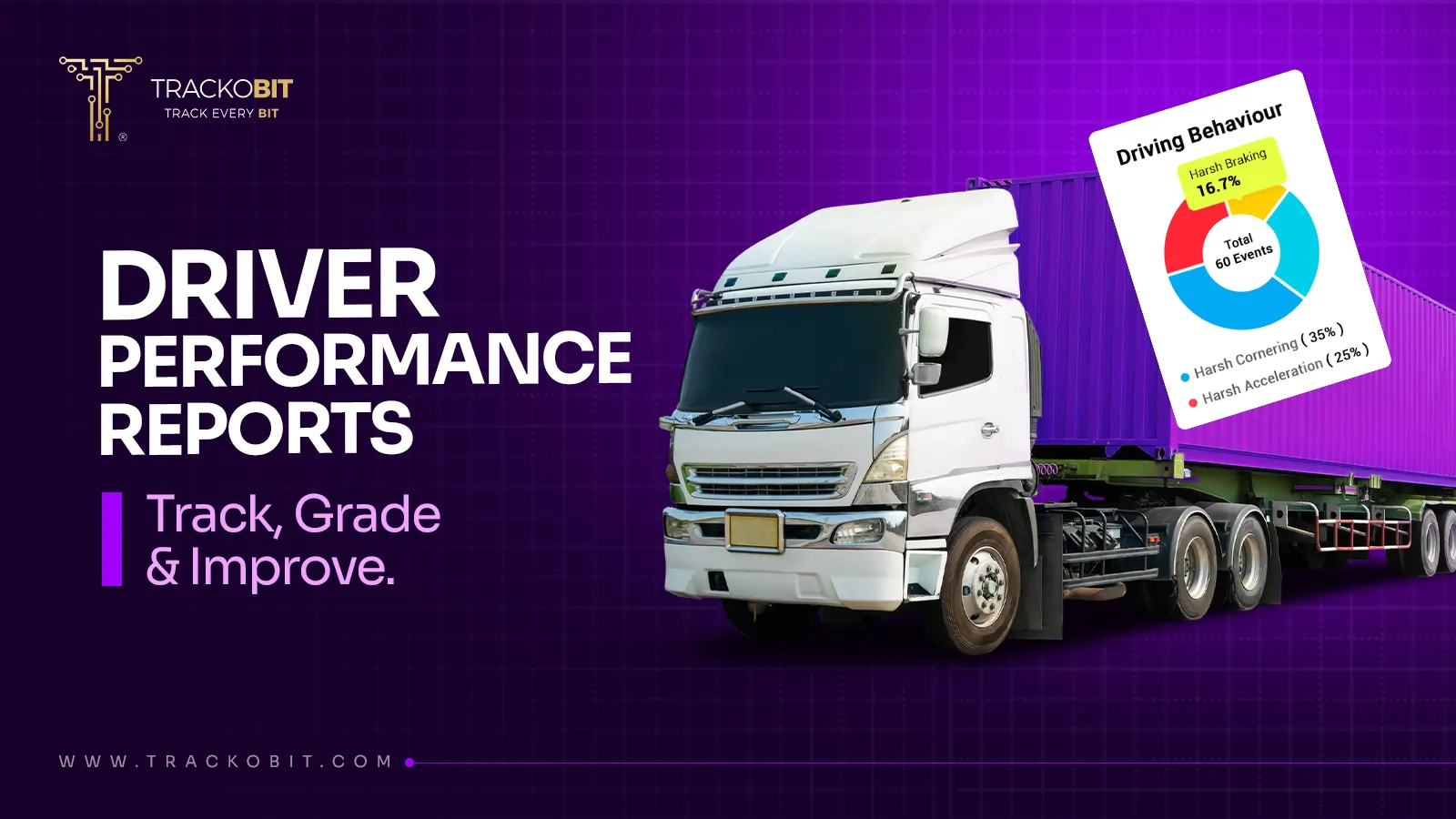
Who’s Really Behind the Wheel? Unlocking Insights with Driver Performance Reports
Tithi Agarwal August 27, 2025Identify top-performing drivers, monitor violations, and grade skills with the driver performance report. This makes fleet operations more transparent and…

Subscribe for weekly tips to optimize your fleet’s potential!
Your inbox awaits a welcome email. Stay tuned for the latest blog updates & expert insights.
"While you're here, dive into some more reads or grab quick bites from our social platforms!"Stay Updated on tech, telematics and mobility. Don't miss out on the latest in the industry.
We use cookies to enhance and personalize your browsing experience. By continuing to use our website, you agree to our Privacy Policy.































